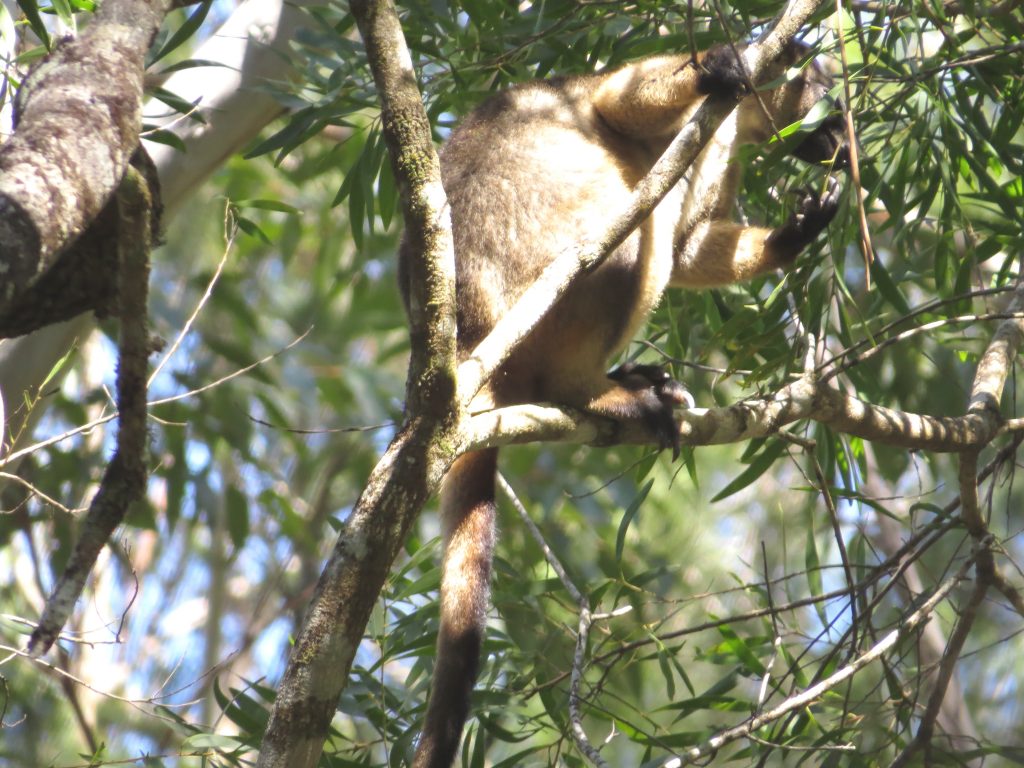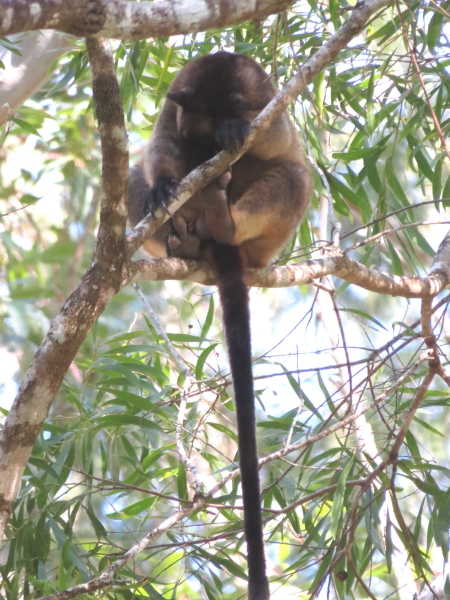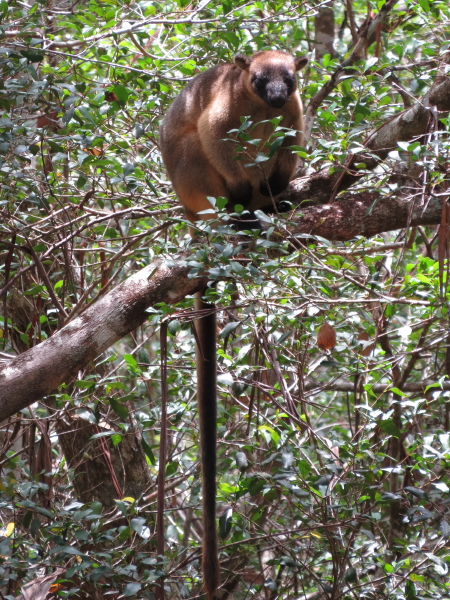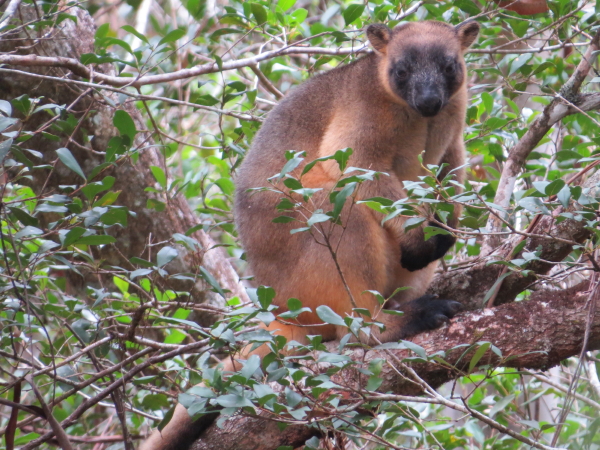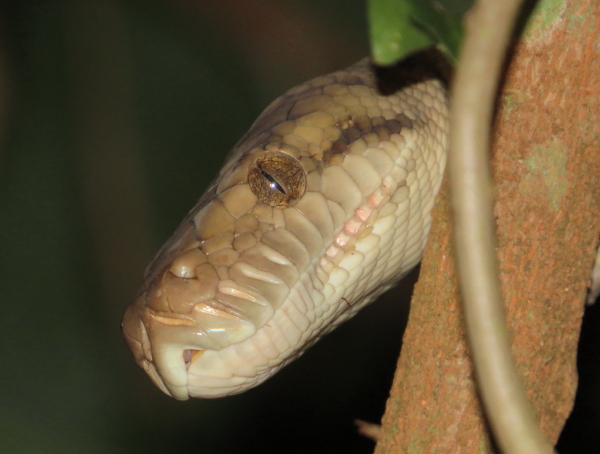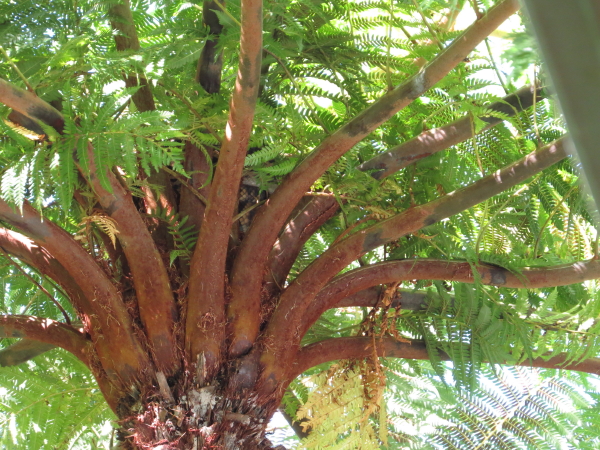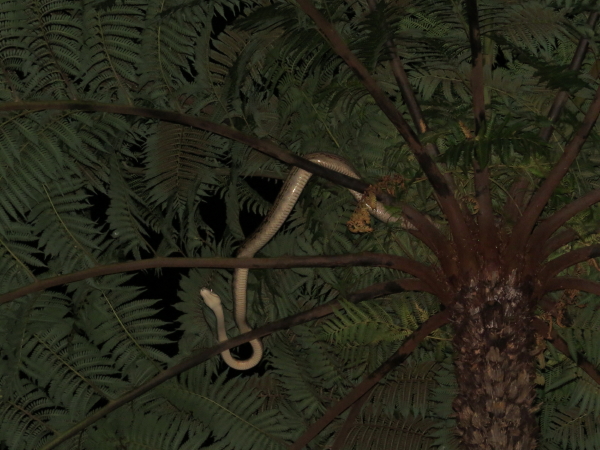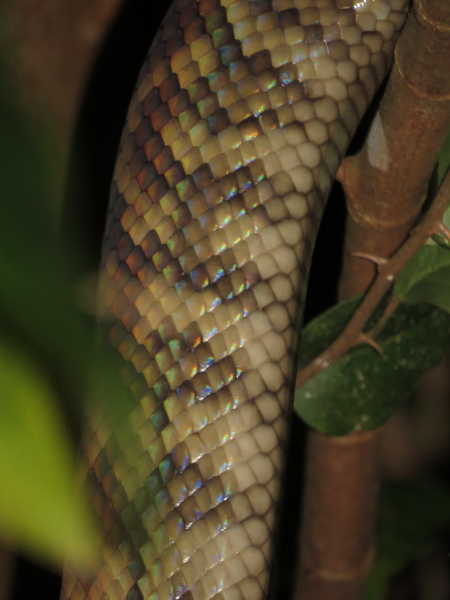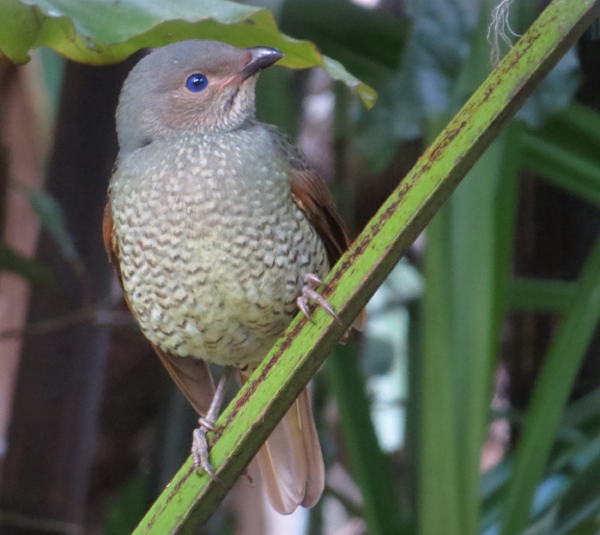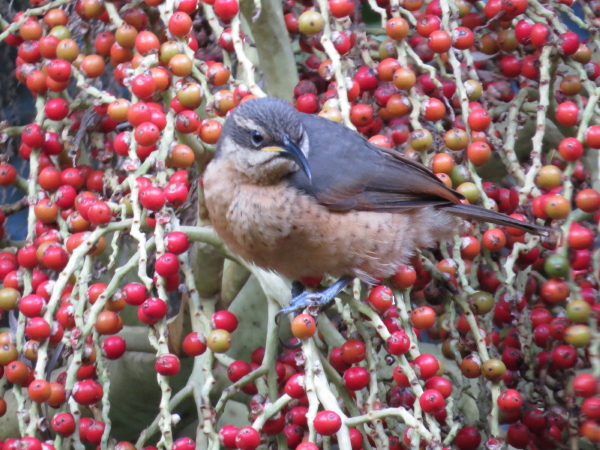
From 2017, we shall have a new cabin near Atherton: “ATHERTON TABLELANDS BIRDWATCHER’S CABIN”.
The cabin has already been completed and has been approved by the local “building inspector” (a young female cassowary made an unexpected appearance):
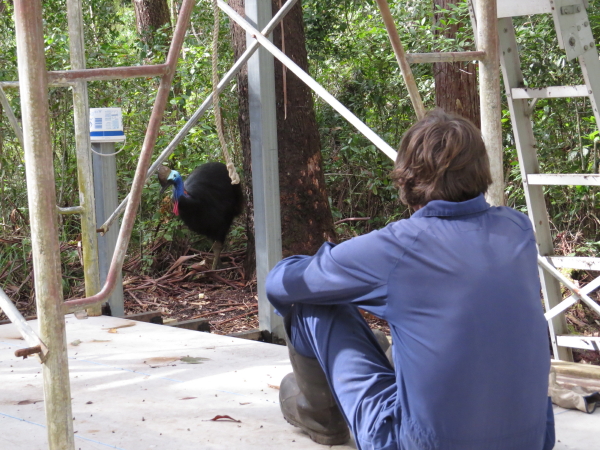


It is situated on our 35 acres (14 hectares) of forest, close to Mount Hypipamee National Park (“The Crater”), bordering onto Herberton Range National Park (in the Wet tropics World Heritage area), 25 minutes south of Atherton.
Our property shares a 250m boundary with the national park, and is the perfect place to enjoy peace and tranquillity.
The 1000m elevation makes it cooler and less humid than Kuranda.
The vegetation consists of tall open forest (‘Wet Sclerophyll Forest’) with the dominant trees being 30-40m high Rose Gums (Eucalyptus grandis), Red Mahogany (E. resinifera) and Turpentine (Syncarpia glomulifera). The diverse understorey contains many rainforest species, which also grow along the creeks.

The transition zone (ecotone) between rainforest and tall eucalyptus forest supports an equally rich fauna:
There are more possum and glider species here than anywhere else in the world (10 identified on our property, including the northern subspecies of the Yellow-bellied Glider(YBG)), Lumholtz’s Tree-kangaroos, a number of ground-dwelling marsupials and more than 10 species of frogs. Leaf-tailed Geckos, Water Dragons and Boyd’s Forest Dragons are numerous.
The Rose Gums readily form hollows (perfect homes for all those tree-dwellers), Red Mahoganies are the favourite food trees for the YBG, which make incisions into the bark with their teeth to then feed on the exuding sap –and they are often joined by Sugar Gliders and Feathertail Gliders.
The gullies and creeks are corridors for rainforest plants and animals.

Birds of the rainforest, like Victoria’s Riflebird and Superb Fruit-doves, can be seen as well as those at home in the drier forests, like Crimson Rosellas, Crested Shrike-tits, lorikeets, many flycatchers and honeyeaters.
The cabin’s veranda, orientated towards our small creek, is an ideal spot for watching wildlife. You may even be so lucky as to see a tree-kangaroo!


A bird list of the about 100 species, which occur on our property, will be on the “birds and birding” page of our soon to be established website.

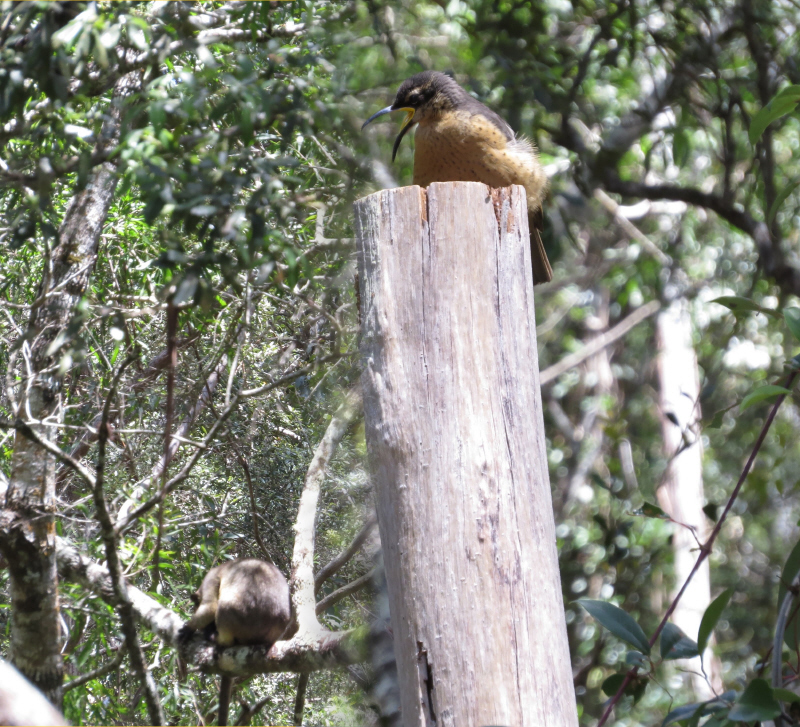

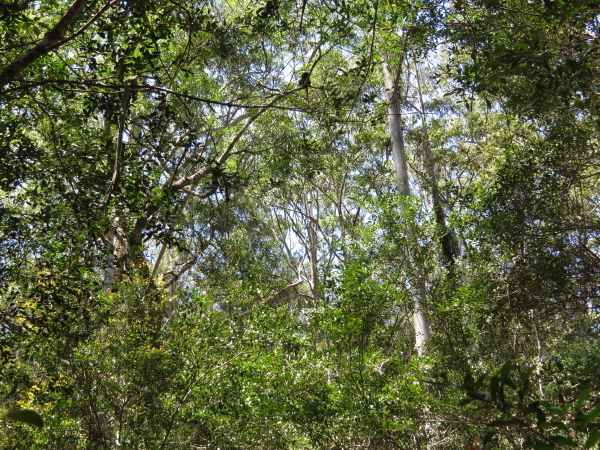
 We have seen tree-kangaroos in that tree on several occasions. This male stayed in the tree all day, taking naps between short episodes of feeding.
We have seen tree-kangaroos in that tree on several occasions. This male stayed in the tree all day, taking naps between short episodes of feeding.